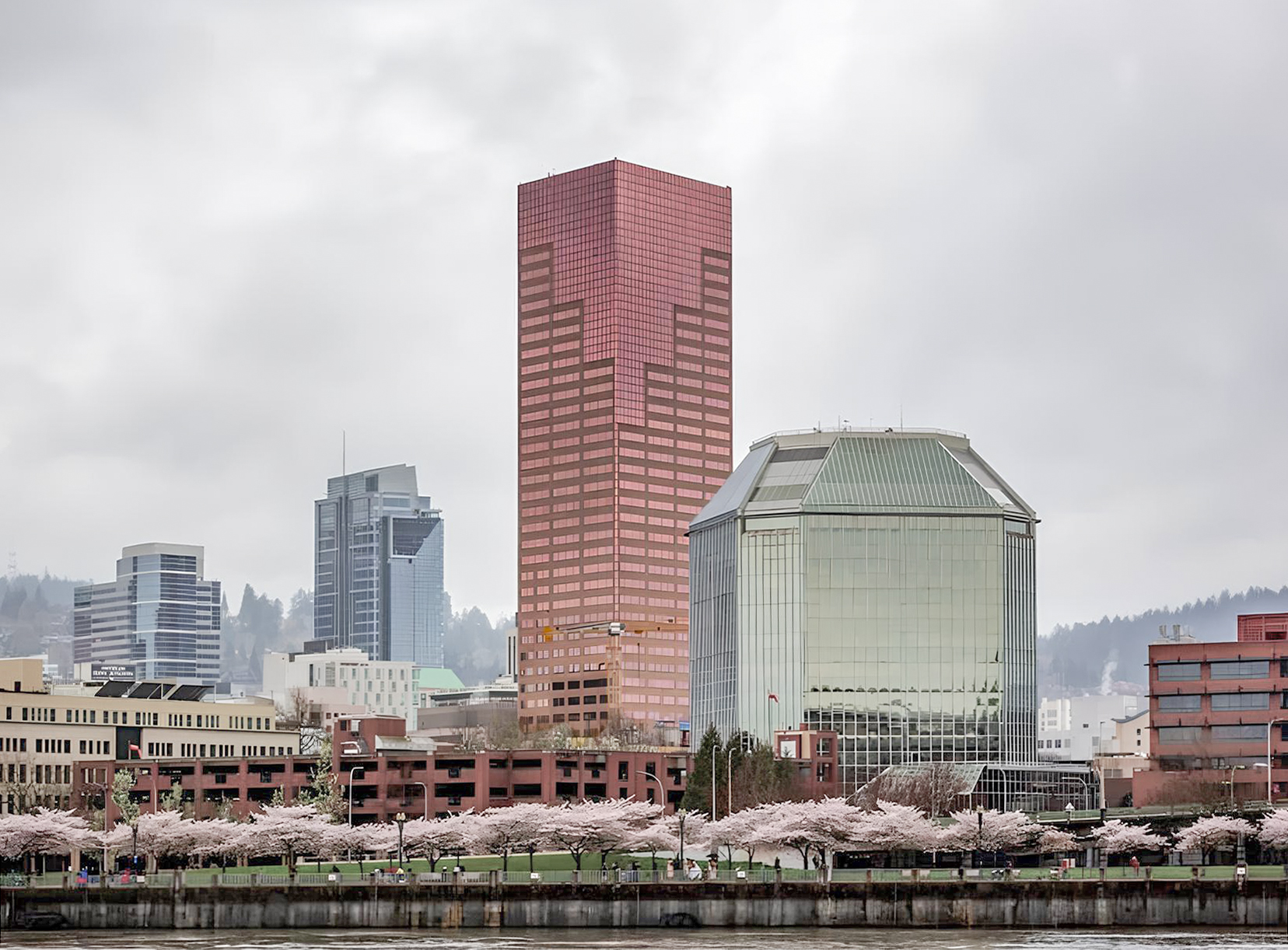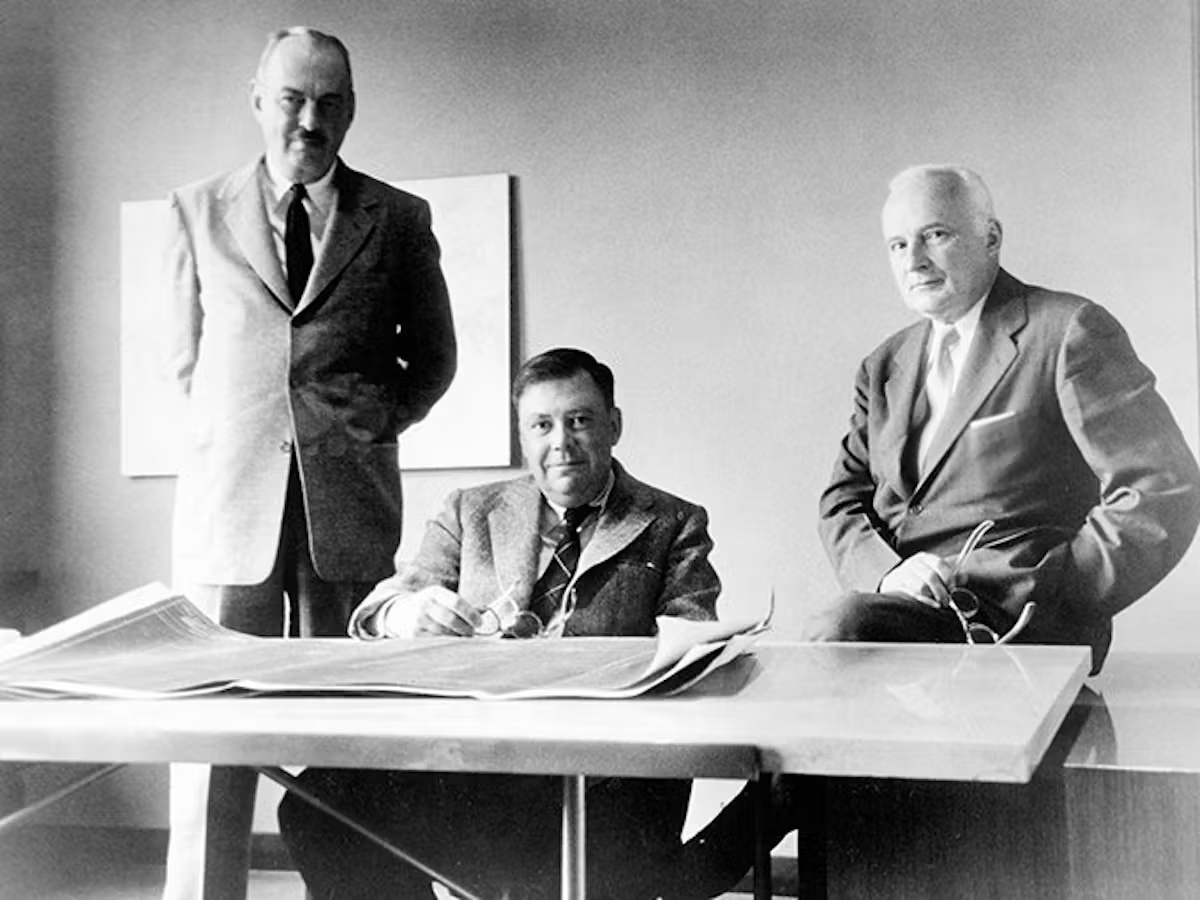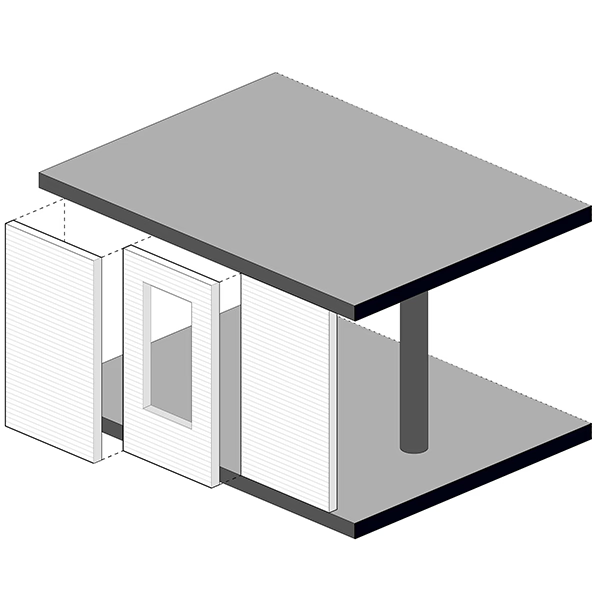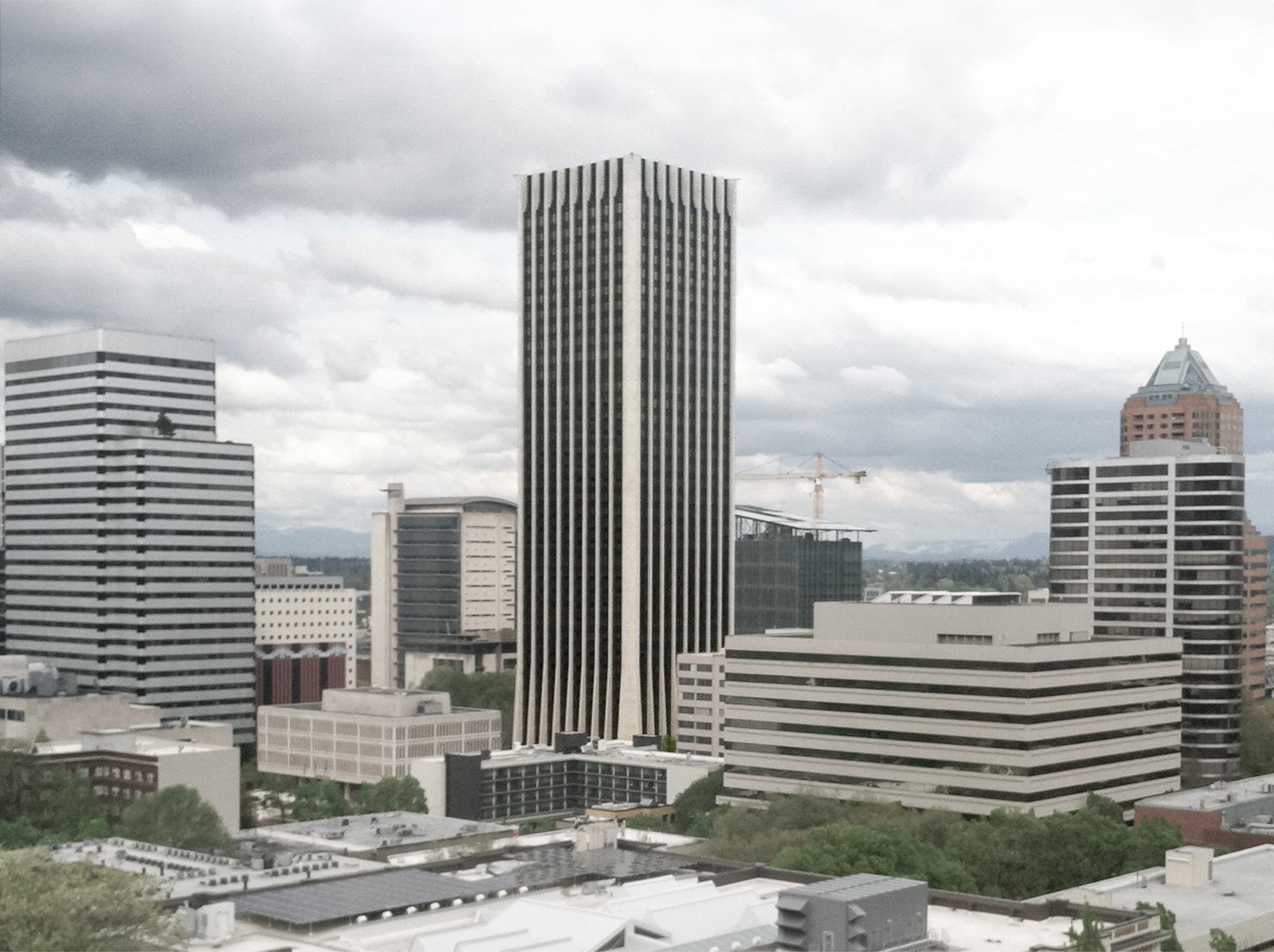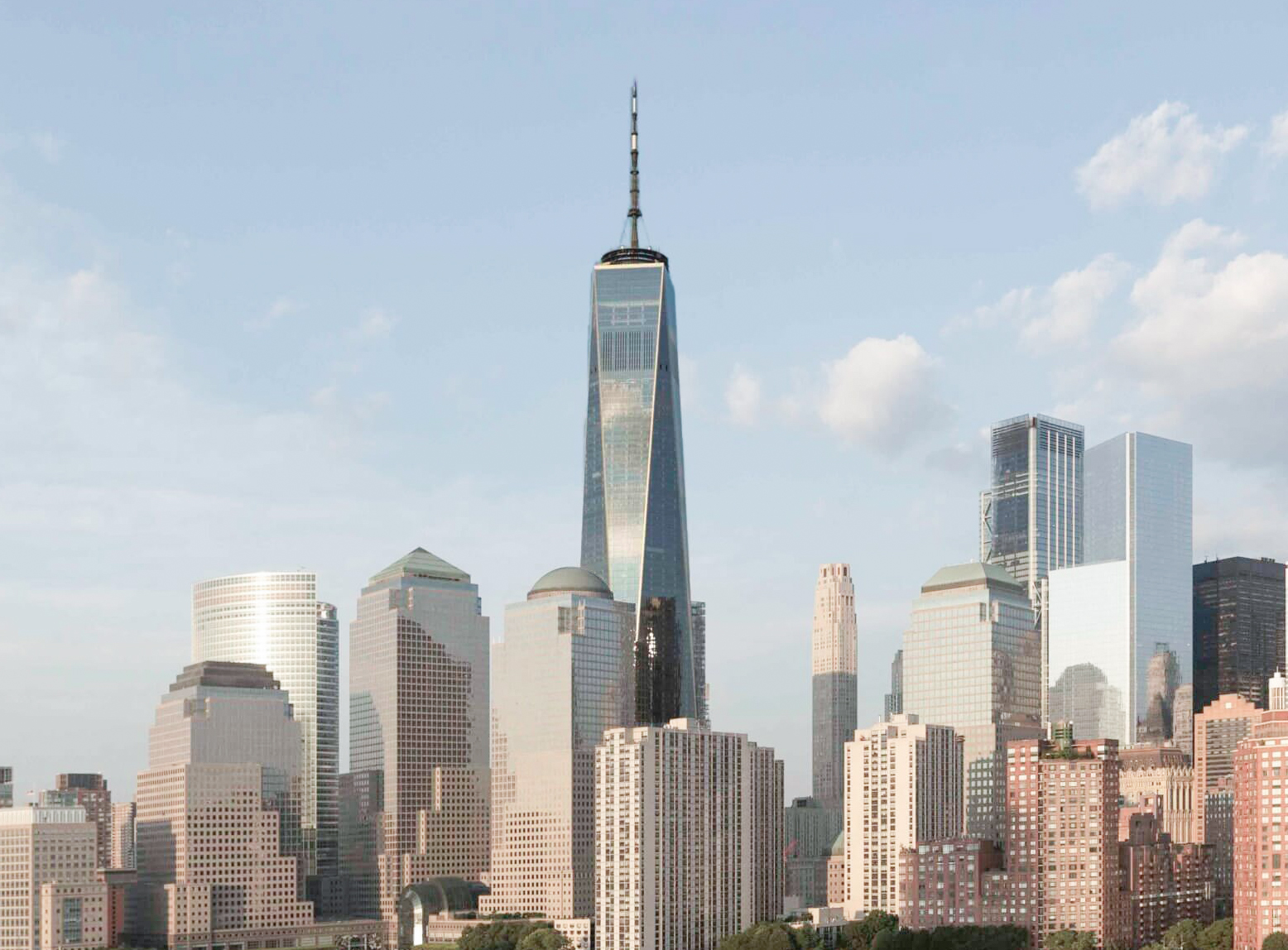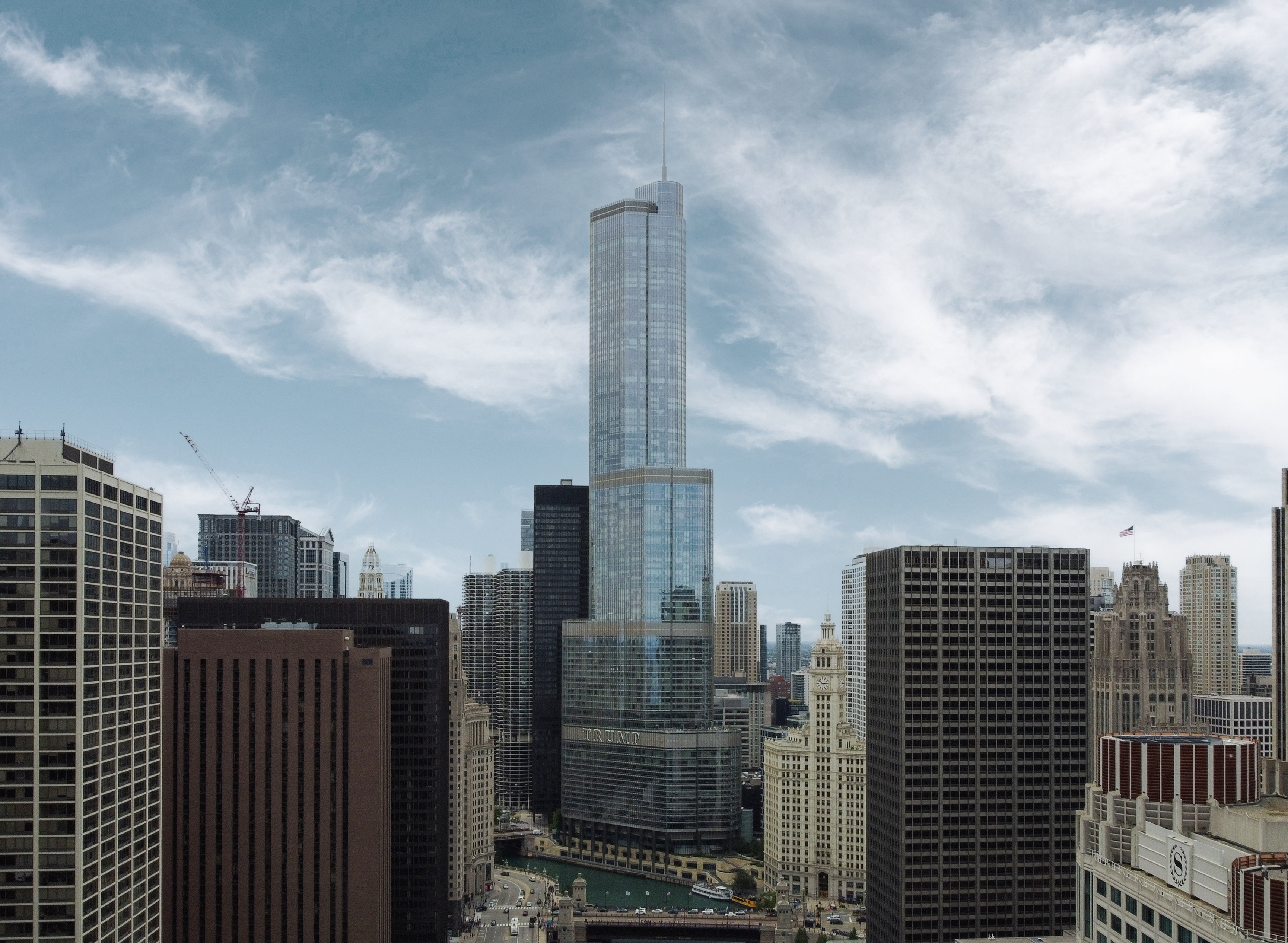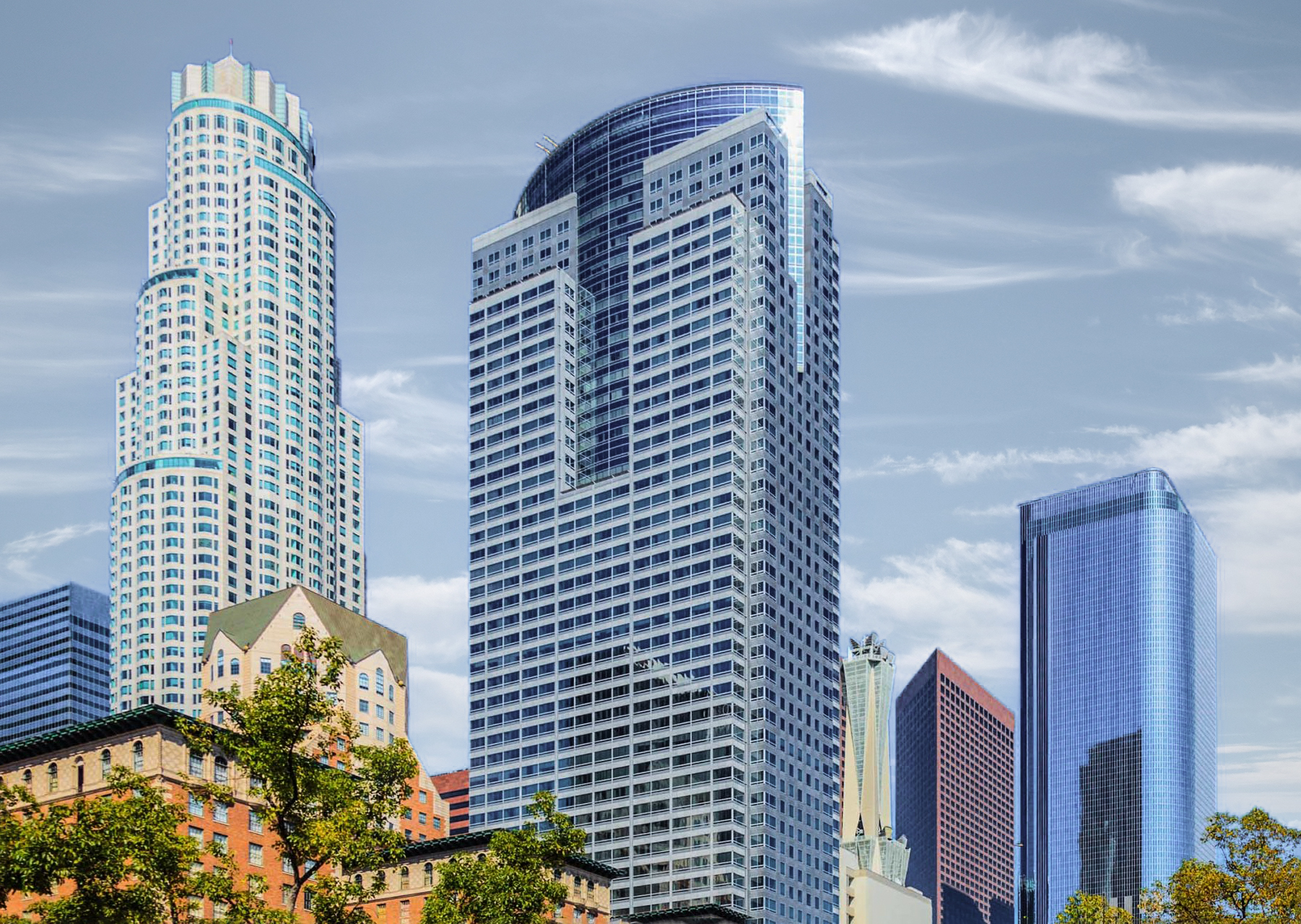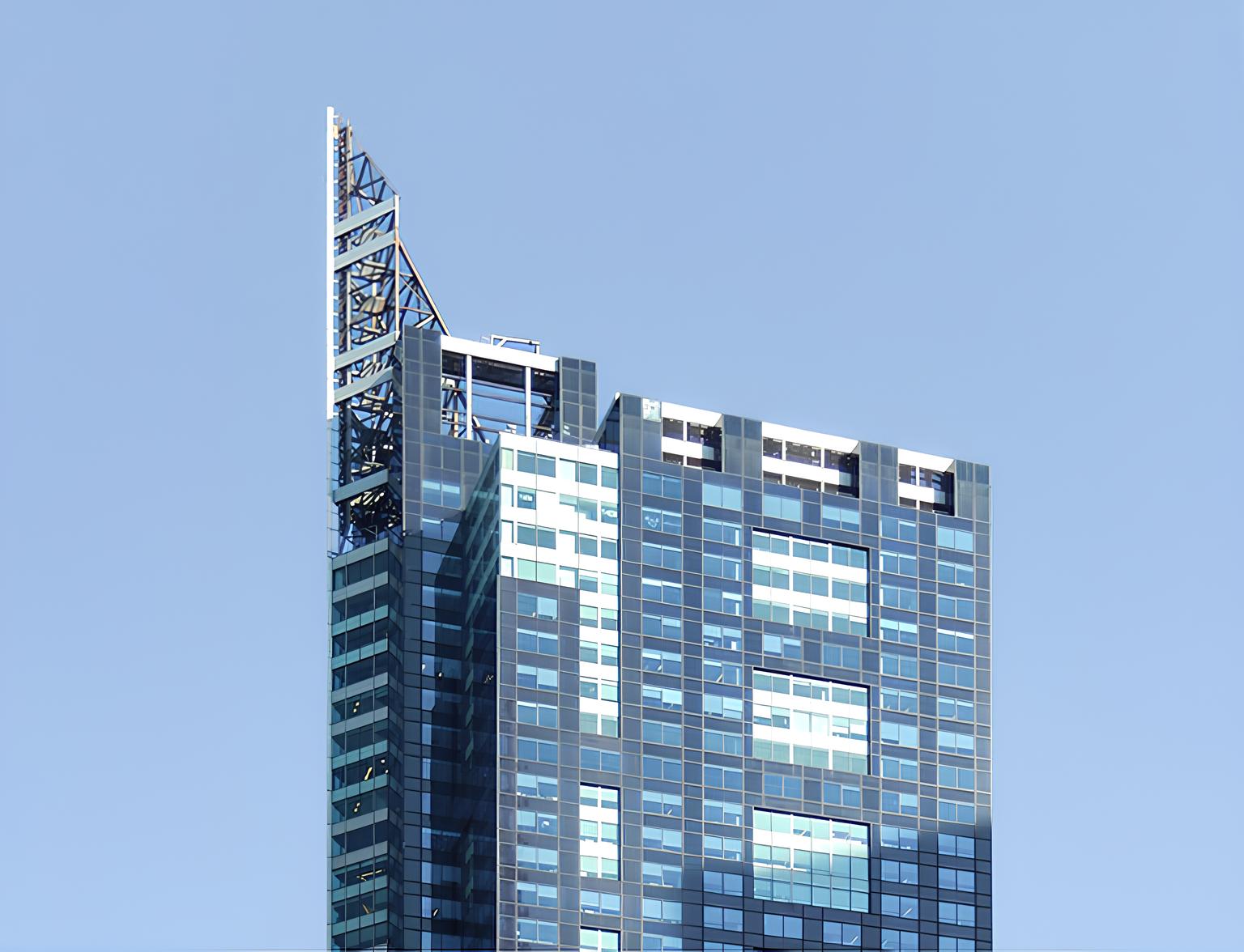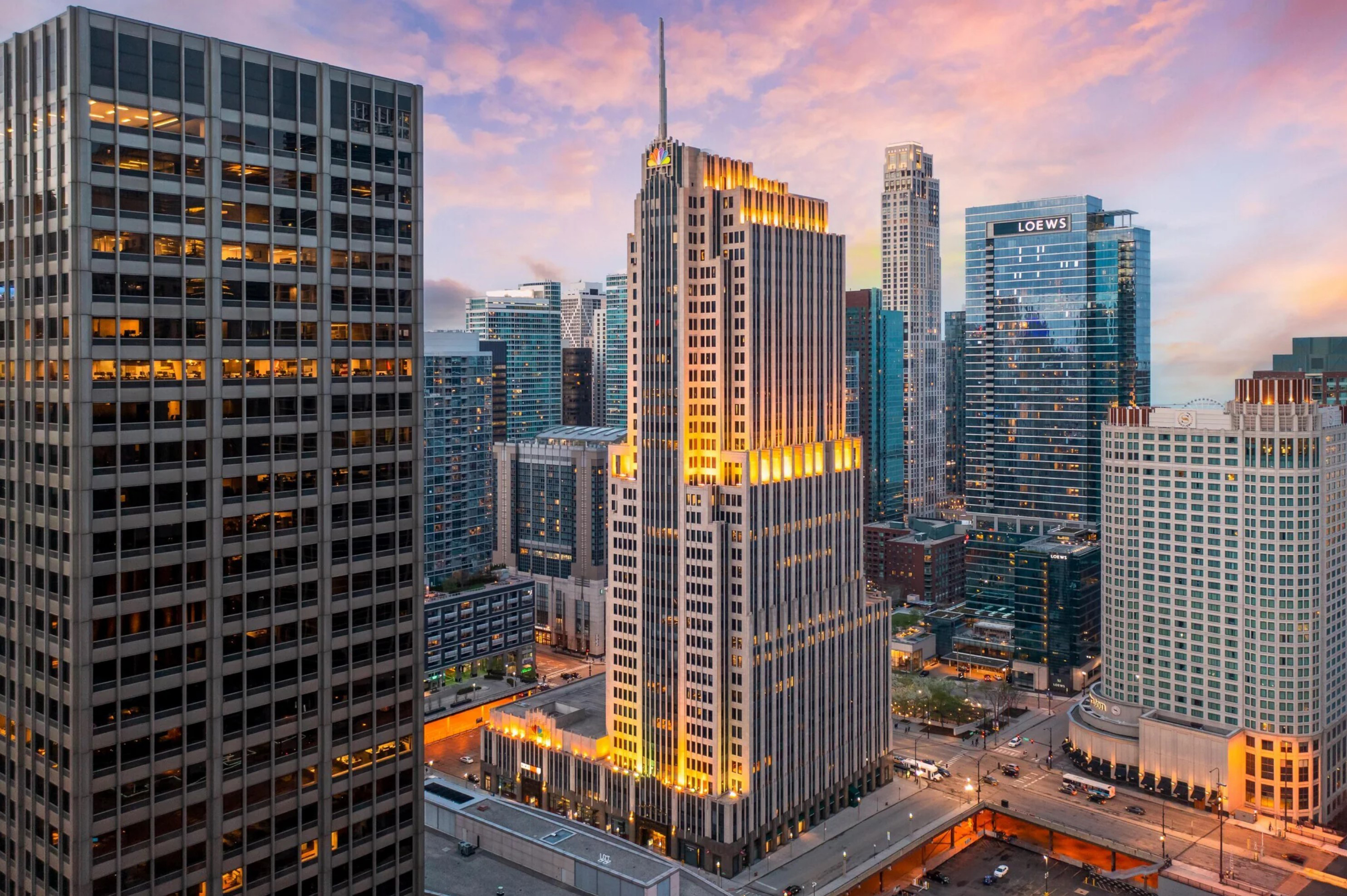The U.S. Bancorp Tower is a Modern Style skyscraper designed by Skidmore, Owings & Merrill, in association with Pietro Belluschi, and built between 1981 and 1983, for a reported $60.0 million dollars, in Portland, OR.
U.S. Bancorp Tower is not the only name you might know this building by though. The building is, or has also been known as Big Pink.
Its precise street address is Address 111 SW 5th Avenue, Portland, OR. You can also find it on the map here.
In 2015 the U.S. Bancorp Tower was awarded with the IIDA Oregon Design Excellence Award for the renovation of the atrium.
The building has been restored 2 times over the years to ensure its conservation and adaptation to the pass of time. The main restoration works happened in 2002 and 2015.
